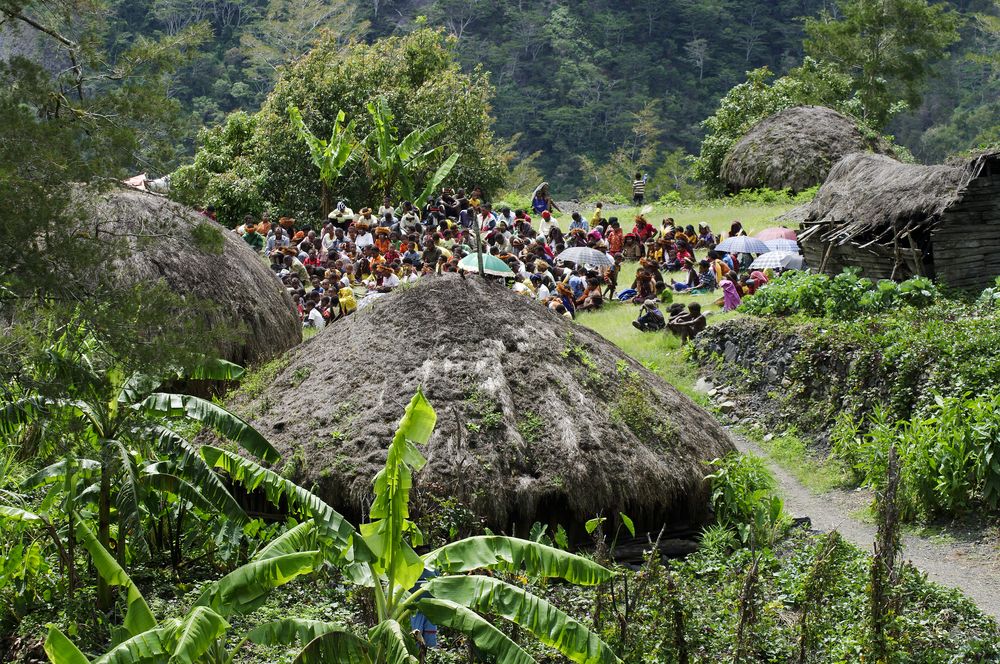Modern-Day Witch Hunts Target Men

In Papua New Guinea, a type of violence usually committed against women has increasingly targeted men: attacks on people accused of practicing witchcraft.
Witchcraft accusations and the subsequent attacks on the accused have plagued communities in Papua New Guinea for years. Now, in a new report, anthropologist Dan Jorgensen of the University of Western Ontario described seven cases that involved the killings, beatings and gruesome torture of male victims.
The cases, which occurred near the village of Telefomin, may hold clues to the roots of violence, Jorgensen said.
"The temptation is to blame [the witchcraft-related violence] on the culture" and the backwardness of the beliefs that are allegedly causing all this trouble, Jorgensen told Live Science. "And I actually think it is actually a false lead." [What's Witchcraft? 6 Misconceptions About Wiccans]
The beginning
The first report of such attacks near Telefomin appeared in 2009 in the local paper The National, which described how a group of men was "tortured with weapons — including iron rods — before being hacked to death."
In the new report, Jorgensen described six cases of male victims between ages 35 and 65, and one case of an attack on a 16-year-old boy. Three of the victims were killed in the attacks.
Sign up for the Live Science daily newsletter now
Get the world’s most fascinating discoveries delivered straight to your inbox.
One of the survivors, Thomas (not his real name), a deacon in his 60s from the nearby village of Talavip, was passing through that area with his two sons when he was assaulted.(Jorgensen used pseudonyms for all the victims mentioned in the report to protect their identities.)
"They beat me and my sons with iron rods and covered me with [oil]," Thomas told Jorgensen. "One of them lit a match and almost killed me, but someone told him that if he did, he would die, too, so they didn't set fire to me."
Violence related to witchcraft and sorcery allegations in Papua New Guinea has attracted media attention in the last decade, and the number of such reports increased fivefold between 2000 and 2006, Jorgensen wrote in the report. (Witchcraft is generally believed to result from inherent powers, whereas it is believed that sorcery can be learned, and practiced by anyone with the right knowledge.)
The violence has even acquired its own acronym: SRK, for "sorcery-related killing." In February 2013, a young mother was publically tortured and burned alive; in April 2013, a retired female schoolteacher was tortured and publically beheaded. The government reacted by introducing legislation to punish the perpetrators of such crimes. [Understanding the 10 Most Destructive Human Behaviors]
But the violence against men in Telefomin may not stem from old beliefs about witches, Jorgensen wrote in the report. In the recent cases, the perpetrators are believed to be a group of young men who dropped out of school and remain unemployed. The locals refer to these men as "the Boys."
A conflict between the Boys and the community — triggered by the lack of educational or economic opportunities for these men, and likely fueled by their drug use — may instead be the real reason behind the attacks.
Drugs, lack of education and impunity
The Boys may be jealous of other men in the community who are more successful, and may feel rage against their own community because of their own disadvantaged social and economic situations, Jorgensen said.
Many young people from Telefomin have been successful in getting their education and pursuing careers, but "these guys are basically [school] dropouts," he said.
Increased costs might explain why the Boys' didn't pursue education, as the fees for attending the local high school increased over time, Jorgensen said. In 2004, when he was visiting the area, the school fees had risen so high that parents started choosing which of their kids would go to high school. "That basically shut the door for a lot of these guys," he said, and there could be resentment about that.
Moreover, some villagers told Jorgensen that prior to the attacks, the Boys used marijuana and drank tea made from a plant called the angel's trumpet. The drink "is a very powerful hallucinogen, that often produces violent fantasies and reactions," he said.
The lack of response from the local police to the attacks also creates the impression of impunity, which exacerbates the issue of violence even more. "As villagers say, the attacks took place under the noses of two local policemen and the district administration," Jorgensen wrote in the report.
It is not completely clear why the police did not take action to counteract those incidents, he said. The police sometimes say they feel outnumbered, while some villagers have suggested that the police were bribed to keep silent, he said.
When attempting to explain witchcraft-related violence, "the thing to look for is the nature of social and economic relationships between the various people involved," Jorgensen said.
The report was published Sept. 12 in the Australian Journal of Anthropology.
Follow Agata Blaszczak-Boxe on Twitter. Follow Live Science @livescience, Facebook & Google+. Original article on Live Science.
Most Popular

